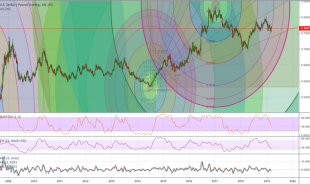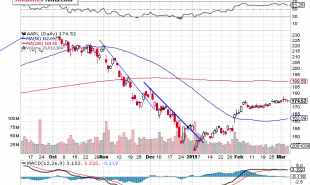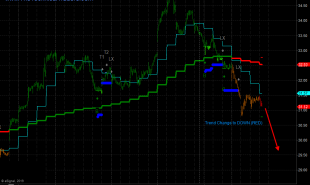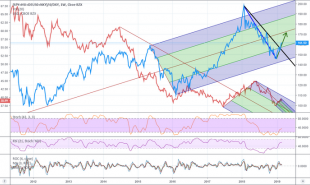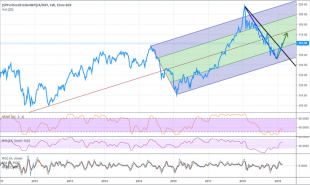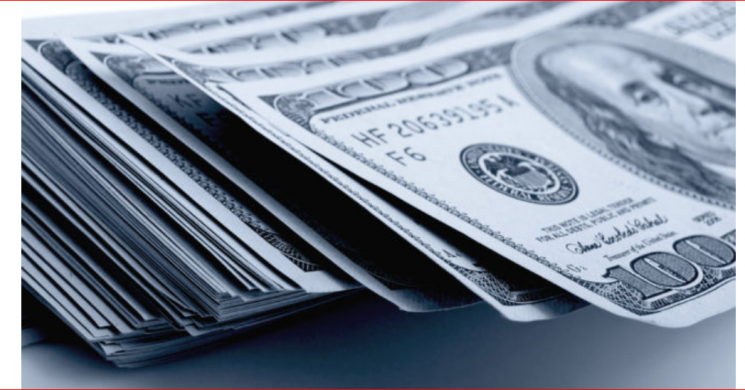
Intro:
This piece by Rickards gives a nice walkthrough of the next tactics in the war on cash. Then he segues to the next domino as the supranational organizations move towards a One Money world.
That next domino is Gold. This reminds us of a phrase used by traders who had risk to cover, but were "waiting". The phrase was "Do it When you Can, Not When You Have To". The implication of this is that when you need it, whatever it is you are putting off will not be available.
"It" can be anything, but it is always related to procrastinating actions because of complacency. If you have bald tires and are waiting for the "right moment" to replace them, don't expect them at a discount when you skid off the road.
Insurance cannot be bought after the fact.. unless you are the Government that is.
- Soren K.
How Governments Can Kill Cash
When you start to see news articles about criminals using gold instead of cash, that’s a stalking horse for government regulation of gold. - Jim Rickards
by Jim Rickards and dailyreckoning.com
The global elites are using negative interest rates to do the same thing as inflation — make your money disappear. One way to avoid negative interest rates is to go to physical cash. In order to prevent that option, the elites have launched a war on cash.
The war on cash has two main thrusts. The first is to make it difficult to obtain cash in the first place. U.S. banks will report anyone taking more than $3,000 in cash as engaging in a “suspicious activity” using Treasury Form SAR (Suspicious Activity Report).
The second thrust is to eliminate large-denomination banknotes. The U.S. got rid of its $500 note in 1969, and the $100 note has lost 85% of its purchasing power since then. With a little more inflation, the $100 bill will be reduced to chump change.
The war on cash is old news, but there are new developments. Last May, the European Central Bank announced that they were discontinuing the production of new 500 euro notes (worth about $575 at current exchange rates). Existing 500 euro notes will still be legal tender, but new ones will not be produced.
This means that over time, the notes will be in short supply and individuals in need of large denominations may actually bid up the price above face value paying, say, 502 euros in smaller bills for a 500 euro note. The 2 euro premium in this example is like a negative interest rate on cash.
Why are central banks like the ECB imposing negative interest rates? What is the point of this policy?
The whole idea of the war on cash is to force savers into digital bank accounts so their money can be taken from them in the form of negative interest rates. An easy solution to this is to go to physical cash.
Yet if physical cash becomes scarce (or nearly worthless due to inflation), savers may pay a slight premium for large-denomination notes. Your premium disappears because the note pays no interest. The elites have actually figured out a way to have negative interest rates follow you from digital accounts to paper money.
Negative interest rates are a thinly disguised tax on savers. The traditional way of stealing money from savers is with inflation. You may get a positive interest rate of 2% on your money, but if inflation is 3%, then your real return is negative 1%.
If we take the same €100,000 bank deposit in the example above and apply a 2% positive interest rate, you would earn €2,000 in interest, leaving an account balance of €102,000 after one year. But after adjusting for 3% inflation, the purchasing power of the €102,000 balance is only €98,940. This leaves the saver worse off than in the negative interest rate example above (assuming no inflation in that case).
In the first case, the banks extracted €500 through negative interest rates. In the second case, they extracted €1,060 in lost purchasing power. Any way you look at it, you lose.
That’s the reality. The second answer is the academic theory behind negative interest rates. In theory, savers will be dissatisfied with NIRP and react by spending their money. Likewise, entrepreneurs will find negative interest rates attractive because they can borrow money and pay back less to the bank.
This combination of lending and spending by consumers and entrepreneurs alike will lead to consumption and investment that will stimulate the economy, especially after the famous Keynesian “multipliers” are piled on top.
This theory is junk science. The reality is the opposite of what the elite academics project. The reason savers are saving in the first place is to achieve some future goal. It could be for retirement, children’s education or medical expenses. When negative rates are imposed, savers don’t save less; they save more in order to make up the difference and still meet their goals.
The other unintended consequence of NIRP is the signal it sends. Savers rightly conclude that if central banks are using NIRP, they must be worried about deflation. In deflation, prices drop. Consumers defer spending in order to get lower prices in the future.
Instead of inducing savers to save less and spend more, NIRP causes savers to save more and spend less. It’s a perfect example of the law of unintended consequences. When abstract academic theories are applied in the real world by central bankers with no real-world experience, you get the opposite result of what’s intended.
These unintended consequences have already appeared in Japan and Europe. Serious doubt has been cast on the ability of central bankers to extend NIRP beyond current levels. Banning cash would make those plans much easier to implement.
One solution to negative interest rates is to buy physical gold.
But governments always use money laundering, drug dealing and terrorism as an excuse to keep tabs on honest citizens and deprive them of the ability to use money alternatives such as physical cash and gold. When you start to see news articles about criminals using gold instead of cash, that’s a stalking horse for government regulation of gold.
Guess what? An article on the topic or criminals using gold appeared, in Bloomberg. This is one more reason to get your physical gold now, while you still can.
As if inflation, confiscation, and negative rates weren’t enough, the global elites are coordinating a new plan for global taxation. As usual, there’s a technical name for global taxation so non-elites won’t understand the plan. It’s called base erosion and profit shifting, or “BEPS.”
The BEPS project is being handled by the OECD and the G-20, with the IMF contributing technical support. If you’re interested in BEPS, there’s an entire website devoted to the global taxation plans and timetables.
The website is worth a look. To paraphrase that famous line attributed to Trotsky, “You may not be interested in BEPS, but BEPS is interested in you.”
The global elite plan doesn’t stop there. There’s also the climate change agenda led by the United Nations. This agenda goes by the name United Nations Framework Convention on Climate Change (UNFCCC).
The science of climate change is a sticky topic, but we don’t have to dive into it for our purposes. It’s enough to know that climate change is a convenient platform for world money and world taxation.
That’s because climate change does not respect national borders. If you have a global problem, then you can justify global solutions. A global tax plan to pay for global climate change infrastructure with world money is the end game.
Don’t think that climate change is unrelated to the international monetary system. Christine Lagarde almost never gives a speech on finance without mentioning climate change. The same is true for other monetary elites. They know that climate change is their path to global financial control.
That’s the global elite plan. World money, world inflation and world taxation, with the IMF as the central bank of the world, and the G-20 Leaders as the Board of Directors. None of this is secret. It’s all hiding in plain sight. The papers, articles and links above give you the resources you need to learn more.
This will be playing out in the next few years.
Read more by Soren K.Group


